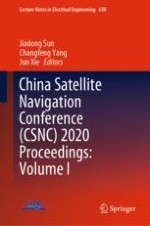2020 | OriginalPaper | Chapter
Coastal GNSS-R Code Delay Altimetry Using GPS L5 Signals
Authors : Xinyue Meng, Fan Gao, Tianhe Xu, Yunqiao He, Ti Chu, Nazi Wang
Published in: China Satellite Navigation Conference (CSNC) 2020 Proceedings: Volume I
Publisher: Springer Singapore
Activate our intelligent search to find suitable subject content or patents.
Select sections of text to find matching patents with Artificial Intelligence. powered by
Select sections of text to find additional relevant content using AI-assisted search. powered by
